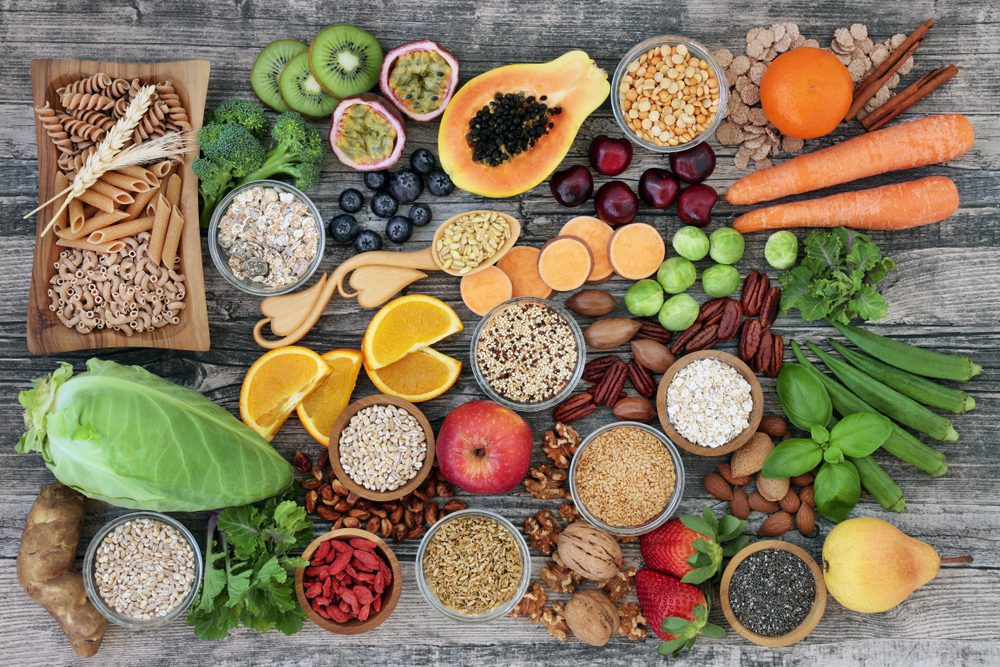Introduction
When I read up on how to live the healthiest life I often come across the term chronic inflammation. The research suggests that this could be the root cause of several lifestyle diseases from coronary heart disease to leaky gut, arthritis, depression, dementia, and many cancers. If this is the case, then reducing chronic inflammation in the body should be one of the keys to slowing and maybe reversing the development of these diseases. The steps that we take to keep inflammation down are important lifestyle factors, but before we see what they are, let’s first define chronic inflammation and understand why it can wreak such havoc in the body.
My understanding of the condition improved immeasurably on reading Undo It by Dean and Anne Ornish, which contains the most elegant description of chronic inflammation, how it develops and how it can be reversed. It is this text that I will draw upon primarily when articulating my own thoughts on the subject.
What is chronic inflammation?
Firstly, a definition of acute inflammation, which we all experience from time to time as a response to injury or illness, will be helpful. This should help us to understand chronic inflammation by comparison. Acute inflammation is a powerful immune response which helps the body to heal when tissues are damaged by bacteria, toxins, trauma or heat, for example. Blood clotting around a cut is an example of acute inflammation. It comes on rapidly and resolves quickly; leaving the body to return to its usual state.
In contrast, although chronic inflammation is also an immune response, it tends to occur more slowly, but may last for months or even years, throwing the body out of its natural balance (its homeostasis). It is made worse by bad lifestyle choices such as unhealthy eating and physical inactivity.
Some of the specific problems that it causes are:
The arteries
The very inside lining of the arteries is known as the endothelium. It is a microscopic layer of cells, which is the artery’s first line of defence. Chronic inflammation injures this endothelial layer, thus initiating the development of coronary artery disease, or atherosclerosis. Once the artery lining is damaged the body tries to repair it and in doing so adds substances to the artery wall, which develop into plaques. As these plaques get bigger they restrict the blood flow to the heart and brain, leading to angina, heart attack and stroke. Chronic inflammation also causes arterial plaques to become unstable and rupture, which can very quickly lead to a blocking of the arteries and subsequent heart attack or stroke.
The brain
Chronic inflammation and oxidative stress can lead to the development of Alzheimer’s disease by short-circuiting the neurons causing neural degeneration and progressive dementia.
The joints
Arthritis is commonly associated with chronic inflammation.
The pancreas
Chronic inflammation of the pancreas can lead to insulin resistance, type II diabetes, pancreatitis, and obesity. In a worrying double whammy, too much insulin leads to chronic inflammation in a dangerous vicious cycle.
Cancer development
Research is increasingly suggesting that an inflammatory microenvironment is essential for all cancers. Specifically, oncogenes that promote prostate cancer, breast cancer and colon cancer do so in part by causing inflammation at every stage in a cancer’s growth.

How can diet elevate and reduce chronic inflammation?
Animal foods versus plant foods
Diet can play a powerful role in elevating chronic inflammation. It can also be the key to alleviating it. As with many health conditions, it all depends on the type and amount of foods that we eat.
Firstly, there is bad news for people who eat animal proteins. These increase the production of interleukins, blood chemicals that promote chronic inflammation. They also stimulate the release of insulin growth factor-1 (IGF-1), another substance that leads to increased chronic inflammation. It is well known that lower IGF-1 levels are associated with a longer life span and reductions in the incidence of cancer and diabetes. Animal products are also high in unhealthy saturated fats and cholesterol, which again increase chronic inflammation.
By contrast, plant foods do not contain these harmful substances and are rich in anti-inflammatory chemicals. Firstly, plant foods do not contain any cholesterol so that problem disappears when someone switches from an animal-rich to a plant-rich diet. In terms of fats, plant foods such as nuts (in moderate amounts) contain anti-inflammatory omega-3 fats, but not the dangerous saturated fats.
As I wrote in my article on plant food diversity, plants contain thousands of different beneficial chemicals. These chemicals; phytochemicals, bioflavonoids, retinols, and. isoflavones decrease chronic inflammation. The most powerful anti-inflammatory foods are blueberries, strawberries, nuts, cruciferous vegetables (such as broccoli), and leafy vegetables (kale is the most nutrient-dense food on earth according to the Aggregate Nutrient Density Index).
Processed foods versus whole foods
The processing of foods, which usually results in the removal of fibre and other important nutrients, leads to an increase in chronic inflammation. For example, naturally occurring sugars found in fruits and vegetables decrease inflammation, whereas sugars and other refined carbohydrates such as white flour can cause chronic inflammation.
Over a long period, the removal of fibre and bran from whole foods means that the resulting processed foods are absorbed more quickly, leading to a spike in blood sugar then the release of insulin to bring the blood sugar back down. These responses are the first 2 stages in a vicious cycle which lead to the downregulation of the sensitivity of insulin receptors and then the release of increasing amounts of insulin to lower the blood sugar. The end result is insulin resistance, a dangerous state characterised by the release of inflammatory cytokines from immune function cells.
Which other lifestyle factors promote chronic inflammation?
Physical inactivity causes an increase in chronic inflammation. This has implications for the overall amounts of physical activity that people engage in, but also for how long we should all be sitting down. Prolonged bouts of sitting are associated with increases in chronic inflammation, but this situation can be avoided if long periods of sitting are disrupted by movement. So, getting up and moving around every 20 minutes can make a big difference for the health of office workers who would otherwise sit down for hours at a time.
Exercise, in contrast to being sedentary, is anti-inflammatory and should be encouraged on a daily basis.
Emotional stress can cause chronic inflammation through changes in stress hormones and direct connections between the brain and nerves all over the body. Reducing stress can be extremely difficult and is dependent on a multitude of complex factors for different individuals. While there is unlikely to be a universal cure, I have found that mindfulness through meditation has a powerful positive effect on stress. I will write more about this in the future.

What can we do to reduce chronic inflammation?
Eat more plants and whole foods
Switching away from a traditional diet, which is heavy in animal products and processed foods, to a whole foods plant-based diet will reduce chronic inflammation. The research says so. This will also help in improving gut health and reducing the risk of developing serious lifestyle diseases such as coronary heart disease, diabetes, hypertension, and cancer.
Move more
Taking physical exercise on a daily basis is anti-inflammatory. This doesn’t have to be intense exercise, but the first step should be to avoid being static for too long during the day and then building on that.
Stress less
Of course this isn’t straightforward. We can’t just stop the difficult issues that life throws at us (if only we could!), but we can lessen the extent to which we worry about them by taking a regular meditation practice to make us more mindful.

Get in touch
Click on Contact in the menu above and email or call me so that we can start a discussion about how I can help you to lead a healthier life, through regular exercise, a transformation to a plant-based diet, and a regular mindfulness practice.





